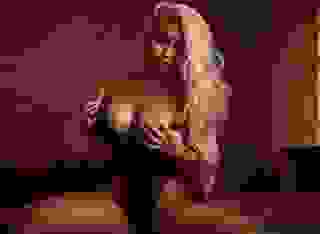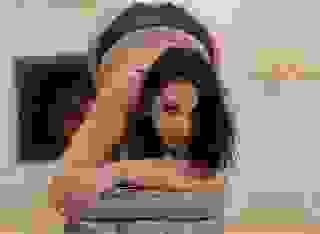- NonHuman
- The Supple John: Ripogonum phallum
Note: You can change font size, font face, and turn on dark mode by clicking the "A" icon tab in the Story Info Box.
You can temporarily switch back to a Classic Literotica® experience during our ongoing public Beta testing. Please consider leaving feedback on issues you experience or suggest improvements.
Click hereReaching out my hand, Dr. Onders took it and pulled me onto the boat, "Welcome aboard!" It was a dingy little thing, about twenty feet long. Most of the supplies had been loaded in the fore, while a deeply tanned local stood at the helm. The captain gave me a grim stare, but then broke out into a smile. The river rushed by below us; extremely wide, very muddy, and with a pace that made me double check the straps of my life jacket. Going along the bank on each side of the river were similarly rustic ferries and boats of all kinds.
I had already been traveling nonstop for over forty hours now. It started with a ride to the airport, then a connecting flight. Then a flight down to Mexico. Then a multi-hour layover. Then another flight down to Bogota, and then my last flight down to Manaus. Finally, after using what little portuguese I knew, I was able to make my way to the docks, where I was able to find the professor.
Manaus lies at the meeting point of the western Amazon River and the Rio Negro. With a population of nearly 1.8 million people it's the last 'real civilization' you would have on the river before you head upstream. However, it wasn't at my destination just yet.
At the age of 21, I was the youngest doctoral student at the university. I was in Brazil to help Dr. Onders with her research studying exotic botany, and hopefully get a start on my thesis. Her lab looked at all aspects of plant biology: evolutionary adaptation, physiology, genetics, and even more exotic things such as chemical communication, and motility. She had become famous by going where other academics wouldn't dare to go. Previously, she had spent months in the Cambodian rainforest, and nearly a year going all around the central African highlands. This time her research was focusing on the western portion of the Amazon Rainforest, and she had a grant supporting her for over a year down in South America. Earlier in the Spring, she and the lab's post-doc had traveled down with all the equipment they would need to do their research, setting up camp and getting everything ready.
It wasn't like I hadn't worked in challenging environments before. During my undergrad I had helped do some research one summer high up in the Canadian Rockies doing surveys of alpine flora. Bears, extreme weather, and malnutrition being the worst of it. However this was going to be my most challenging excursion I had ever completed. For most of the past year I had been preparing for this with language training, wilderness survival training, fifteen mile hikes almost every other day. I even had to get three full rounds of shots to boost my immune system and prepare for various potential diseases. I don't think my body had ever been in such good shape before.
The next two weeks involved the three of us heading steadily upstream on our little boat. The further we went, the bustling little port cities on the river became sleepy little towns. Soon enough, we were more or less on our own on the river. Occasionally we would pass by a local in a canoe, but they would keep their distance. I tried my best to keep track of our progress on my little map that I had, but after the eighth little tributary we turned up, I was lost. There wasn't any record of where we were on paper.
Looking at me puzzling over my map, Dr. Onders smiled at me, "Don't worry Sarah! Jo knows where we are going. Don't you Jonathan!" Our captain looked over and gave a sage nod. "Besides, we have our GPS to really guide us." I looked over at the little screen with its bright liquid crystal display. It was our lifeline to the outside world.
Dr. Onders had been searching for rare plants off and on in the western amazon for decades now, but this was the first chance she has had to truly take her time. It started as rumors told to her by colleagues at various conferences, some jungle liana, capable of unheard of motility. She had a couple leads in the area that seemed promising. After making contact with some local professors, they got her in touch with some locals in the area. Supposedly some of the rumors were true. In years after unusually high rainfall, in certain areas of the rainforest, there were almost explosive levels of growth that would happen. With that information, and grant in hand, the good doctor had waited for a year with especially heavy rainfall. Perhaps it was luck, perhaps it was climate change, but last year was the year, so she was planning on spending the next four months or so looking for this fabled plant.
The trip up the river was mostly boredom, slowly chugging against the current, checking, then rechecking the supplies and equipment we brought in. It was mostly unnecessary since all the key equipment had already been brought up the first trip upriver by Dr. Onders and one of the postgraduate students from the lab. The two of them had done all the truly hard work of finding the base camp site and setting it up.
Otherwise I just occupied my time by drawing in one of the sketch pads I brought, and working on my portuguese with Jo. He was mostly taciturn, and a little gruff when his boat acted up, but overall was friendly. He had been working on the river all his life and "planned to continue as long as the river would let him."
As much as I tried, I hadn't been ready for the jungle. Each day was incredibly muggy and most evenings were interrupted by a downpour of some sort, more than once the threat of lightning stopped our progress. Even if I had some shelter from the rain, I just sort of gave up truly being dry for the next couple months after I had sweated through my shirt for the fifth day in a row.
Everything was so green as far as the eye could see. There was an almost painfully intense verdancy to everything. Unlike what you saw back home, these plants were just always growing. Constant warm temperatures and consistent rainfall meant everything was thriving and competing for resources. Dr. Onders and I spent hours talking about the different species we saw, too many to name, many likely without a formal name.
Finally we got to our destination. The base camp was located above a beach line where our tributary and a smaller creek met. I could see from the boat, in a small clearing were two temporary buildings that had been sent up. Walking down the beach towards us was Andre, the other member of our lab team. He had remained at camp while Dr. Onders came to get me and the supplies I was bringing.
"Hello there!" he gave us a big wave. A large man with a scruffy beard, he looked tired. I could imagine he was absolutely exhausted after being out here for nearly two months. We had our emergency beacon in case something went wrong, but I could imagine how on edge it could make you. It was dangerous out here. In the states if you got lost, you could expect a search party to come looking, maybe a helivac. Out here, if you turn on your emergency beacon, you might get some help in a day if everything goes your way.
"Andre! Glad to see you survived out here. Did you run into any trouble?" Dr. Onder asked.
"Surprisingly, no. I was even able to complete the sample survey for sector delta."
"Excellent, excellent! Let's get everything unloaded and we can get you on your way home.
The four of us hauled the boxes of supplies off the boat. There were various freeze dried and vacuum sealed packages of food, sample vials, and other odds and ends that needed resupplied. In turn, we brought on board all the samples that Andre was going to bring back home with him. All in all it didn't take much more than a couple hours to get it all settled. We ate a quick lunch, and sent Andre and Jonah on their way back down river.
Dr. Onders got me up to speed on the set up of the camp. The two main 'buildings' were constructed using hollow aluminum poles and canvas stretched between them, each with a canopy over the top. Both had had their dirt underneath pounded flat, so the surface acted as a passable floor underfoot. The smaller building acted as a sleeping quarters, with just enough room for two cots, while the other one was more utilitarian. That one had all the research equipment and supplies inside, along with a couple tables set up for research and eating. Most importantly the 'restroom' was a clearing in a forest about twenty yards from camp with a shovel in it. That was probably my biggest, "things are different out here moment", up to that point.
For the next couple days we organized the samples and recordings that Andre had taken, and I familiarized myself with the routine of living and doing research in the jungle. The biggest difference for me was at night. There wasn't any artificial light for miles, so with the exception of some light from the waxing moon, it was completely dark in the tent. I was stretched out on the cot, underneath a thin sheet. Initially I had trouble getting to sleep. It seems silly to say, but the forest around us just seemed alive. My ears perked up at every little sound, every branch rustling, every bird call, the buzzing of all the insects. I had been given all the shots, and made sure to diligently take all my antimalarial medicine, but I was still glad for my netting around my cot. You never knew what could happen.
After the first couple days we set up a schedule: pack and prepare in the morning, hike through towards a designated location, take samples and make observations, then finally return to camp to process what we learned for the day and plan our next move. Dr. Onders had acquired a government map of the area that mostly just showed us where the river was located, but most importantly it was to scale. We planned on breaking the map up into different sectors and surveying each of those sectors each day. If we found something interesting we could go back, or even set up a secondary camp near the site of interest.
Each day we hiked out through the jungle, blazing a trail where we could, and just easing our way around the dense brush where we couldn't. Every once in a while we would spot a new plant, or just something interesting. We would take a picture, and write down a description of where we found it, the conditions we found it in; and if it appeared we would not harm the population by doing so, take a sample to be studied later.
After the first week and a half we had made lots of excursions out, and between Andre, Dr. Onders, and myself, a decent chunk of the map had been explored. Most days it rained for at least a couple hours. You got used to it, and you had to accept that unless you were under a roof you were going to get pretty thoroughly drenched. A poncho could only do so much to protect you. I began to look forward to the evenings when I would strip down and change into some dry clothes for the rest of the evening.
While we hadn't yet found the plant at the source of the rumors, we had found quite a few plants of potential interest. I had been still wondering what I should look into for my thesis, and a couple of the specimens had sparked some ideas. There was a small flower that grew on the bark of trees that seemed to have developed a relationship with a certain species of ant. The ants would leave the bodies of their dead by the rhizomes of the flower, and in turn collect the dead and dying leaves of the plant, returning to the nest with them. It seemed at this point at least an intriguing line of inquiry.
It was a couple weeks later when Dr. Onders found what we were looking for. It was a muggy early afternoon, and we were following what seemed to be a game trail through what we deemed to be the 'Oscar' section of the forest when we spotted it. The two of us had spent most of the morning working our way around the base of a cliff, following it around as best we could. Eventually, the cliff turned until it met another rise of land. Between them a small canyon formed, that as we followed up, eventually opened up into a little valley sheltered from the rest of the forest. Scattered about were little clearings, which wasn't the astonishing part. The thing that stopped us in our tracks was in the heart of the valley. There we found around the trees in that valley were thousands and thousands of vines, completely extraordinary in nature.
"This is remarkable! Look, look at this!" Dr. Onders exclaimed excitedly. He pointed out a vine that had wrapped itself around a tree near us. "My god, look at the texture on that. That looks more cactacae than any liana I've ever seen."
It was true. Instead of the woody bark of most vines I had seen, this plant's outer surface was almost waxy. Taking a glove out of my pocket, I slipped it on. Reaching out with my finger, I gave it a delicate touch with my finger, and was astonished at what I saw. The vine moved. It reacted to my touch, the whole thing shifting away maybe a centimeter as if it was an irritated snake. "Are you seeing this professor?"
Pulling out the camera, she told me, "Do that again?"
I did as she asked, this time poking the smooth surface of the vine with my finger. As before it moved, seemingly very deliberately away from the stimulation.
"Remarkable! Truly remarkable. I don't think I've seen anything like it," Dr. Onders declared.
"How do you think it does that?" I wondered.
"You know," she said with a twinkle in his eye, "We're just going to have to find out.
For the next hour we measured out the grove of vines. It turned out that it covered most of the valley floor, bright green runners went every which way. They were everywhere, in the trees, across the ground, connecting one tree's canopy to the next. For the most part, they seemed to max out at about three centimeters in width, but new growth and side shoots featured smaller tendrils. Along the vine, every meter or so, was a cluster of delicate leaves which seemed to act as some sort of branching point. Perhaps most excitingly for us, it seemed like there were buds of flowers being formed in the leaf clusters. They didn't quite seem mature just yet, but we figured they were perhaps a week away from opening.
The most dramatic thing that day happened when the professor decided to get a sample. She had set on cutting about a meter off the end of one of the vines, that way it would show some of the new growth all the way to one of the leaf clusters. He directed me to hold it down which was a weird experience, because it kept almost wriggling in my hands. Any plants with any motility that I had seen had either done so relatively slowly, or in a very simple manner, such as two rows of leaves coming together. This vine almost seemed, well, active.
Carefully Dr. Onders took his pack knife out and set it on the vine. Slowly, he started to work the blade up and down across it, and the blade's keen edge dug into it. Immediately I could feel the vine react, the little tendrils holding it in place released and it seemed like it wanted to just drop straight down off the tree. Fortunately I was holding it tight in place. The next surprise came as he cut deeper in, past the first few layers of tissue. I was getting excited, and leaned in to examine our progress when a spray of warm liquid burst out, splattering the two of us, but mostly me. I jumped back in surprise. I could feel it sticking to my face and across my shirt.
"Hold on, be careful," Dr. Onders told me. Taking out a cloth he handed it to me. "Did it get in your eyes."
Blinking, I didn't feel anything. "No, I don't think so."
"Good. You aren't immediately screaming in pain, so hopefully it isn't toxic."
I gave her a look as I wiped my face. Looking down at the cloth of my blouse, it was now covered in a thick, milky substance. I blushed as my mind jumped to just how lewd I must have looked a moment before.
"Did I get it all?" I looked down at my shirt, and dabbed at the last drops of the sap on it.
"It looks like, but here, just to be safe, douse yourself in this," he handed me a water bottle. Grateful, I unscrewed the cap and upended it over my face, grateful to clear the last of the slick sap off of my skin.
Now that the vine had been opened up, the end of it hung unsupported, while the rest of the vine seemed like it was trying to creep away from the danger. This time Dr. Onders went more quickly, and holding on to the end, she made relatively easy work of it cutting the end right off.
"I can't believe you're so nonchalant about what just happened," I wondered out loud.
The professor continued her work, cutting through the rest of the vine, "Generally speaking, most plant sap isn't dangerous to the touch. Now if you got some on your mouth, there might be some cause for concern."
She gave me a questioning look, but I shook my head. It had burst across my face, and even onto my lips, but I had avoided ingesting any as far as I could tell.
"We'll head back to the camp and have some steroids at the ready, but I think you'll be fine," he said as she cut through the last bit of tissue.
Dr. Onders was right. There wasn't any itching, stinging, or swelling so far. My face felt fine. I just wondered why a plant would use such an adaptation, or at the very least why it needed so much sap kept at a high pressure.
At last Dr. Onders cut all the way through, and holding it out, carefully placing it into a specimen bag. "Now comes the exciting part," her eyes lit up.
The exciting part turned out to be hours of painstaking observation and note taking over the next couple days. We did everything we could using the tools we had to examine this novel plant. First were pictures and sketches from every angle. Then we examined the sap, conducting various chemical analyses that we could to determine its makeup. Ultimately we found out it was mostly water, but composed of a complex mixture of oils and proteins. Upon further examination of the structure of the plant, Dr. Onders hypothesized that it used the sap simultaneously as a form of storage, and as a means of locomotion. It turned out that the vine was composed of a series of distinct segments, one attached to the next. The sap was stored within each of the segments, and the professor thought it was moved from one segment to the next enabling a sort of locomotion, similar to hydraulic fluid. Depending on how much sap was in each chamber, that segment would be more or less turgid. This explained why when we cut into the vine, that particular segment of it had become limp, while the rest of the plant held its shape.
One of my more interesting discoveries happened when I was examining the newest growth section of the vine. While looking at the end of it under the scope I found that the end of it had particularly large stomata. Normally these pores allow for exchange of gasses, but when I manipulated the cutting it started to ooze out some of the sap. Testing it some more, I prodded and squeezed until eventually the whole end of the vine was covered with a thin, slick coating of sap.
"Professor...you should come look at this," I called out to her.
We ended up setting up a secondary camp in the valley near the grove with the vines. It worked out better since Dr. Onders wanted to run tests on specimens that had more recently been harvested. By the time we were able to hike back to our base camp, some level of natural decay had started. This way we could examine the living cells of the plant. Additionally we were growing more and more excited as it looked like the buds on the flowers were nearing bloom.
The two of us had scouted out a clearing near the camp where we would set up. The plan was to have at least one us there near the grove, until the first set of blooms started to open. We had planned to alternate who would spend the night at the secondary camp, manning the camera, and making observations after dark. One of the things we had noticed was that some of the vines would be in dramatically different places from one day to the next. After the first time it looked like this had happened, we had tagged a few to make sure. The next day our suspicions were confirmed when each one was found at a minimum a few meters away from the previous day. One vine had traveled well over a hundred meters from one day to the next.








